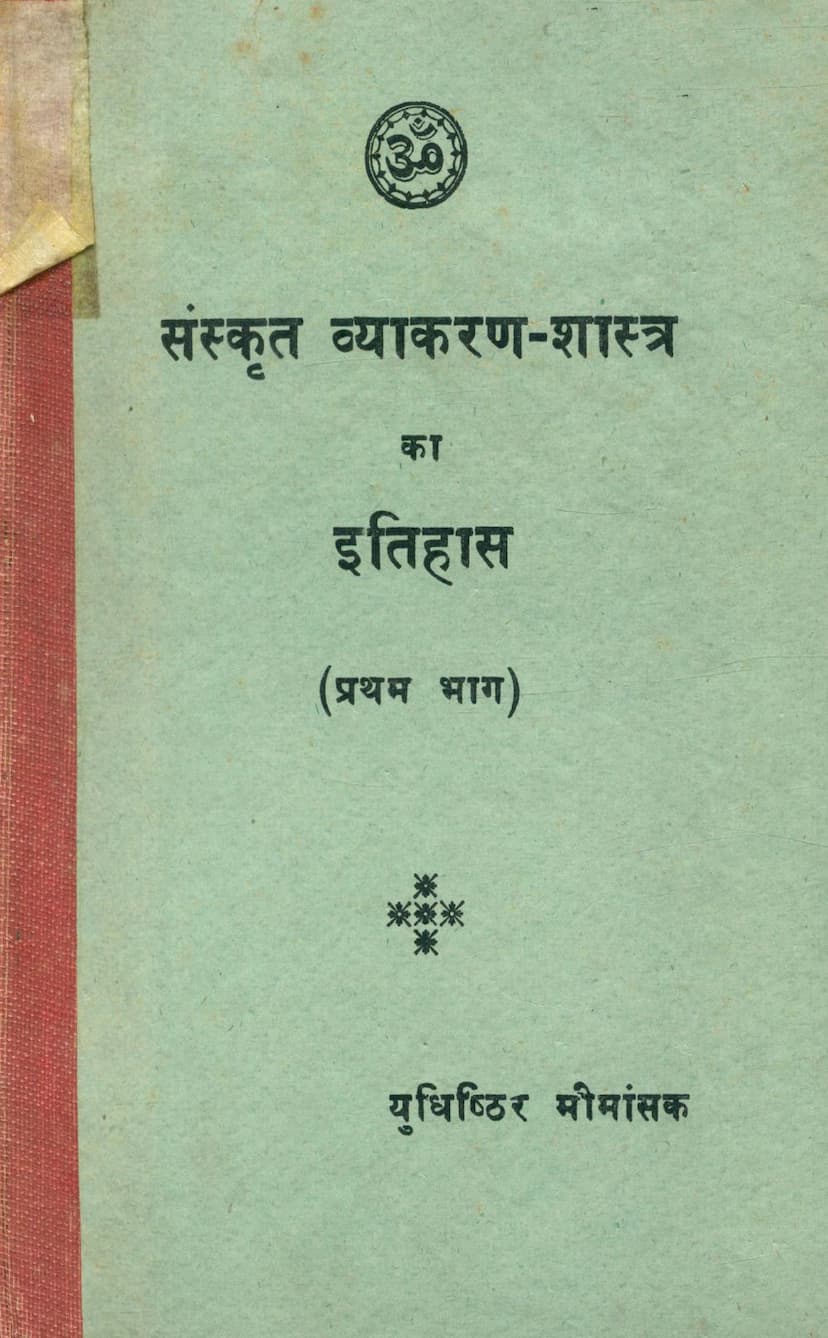Sanskrit Vyakaran Shastra Ka Itihas 01
Added to library: September 2, 2025

Summary
Here's a comprehensive summary of the provided Jain text, "Sanskrit Vyakaran Shastra ka Itihas" (History of Sanskrit Grammar Science), Volume 1, by Yudhishthir Mimansak:
Book Title: Sanskrit Vyakaran Shastra ka Itihas (History of Sanskrit Grammar Science) Author: Yudhishthir Mimansak Publisher: Yudhishthir Mimansak Volume: Volume 1 (प्रथम भाग)
This foundational text, "Sanskrit Vyakaran Shastra ka Itihas," by Yudhishthir Mimansak, meticulously chronicles the historical development of Sanskrit grammar. The author, a deeply learned scholar, dedicated a significant portion of his life to this monumental task, overcoming numerous personal and financial challenges. The text is presented as a comprehensive, multi-volume work, with this being the first part.
Key Themes and Content:
- The Indispensable Role of Sanskrit Grammar: The book emphasizes the central and crucial position of grammar within the vast expanse of Sanskrit literature. It is portrayed not merely as a subject but as the backbone of Vedic and classical Sanskrit, essential for understanding the nuances and depth of ancient Indian thought.
2Sanskrit as the Source of Language:** Mimansak asserts that Sanskrit is the primordial language of the world, the origin from which all other languages evolved. This perspective challenges modern linguistic theories that posit other proto-languages.
-
Critique of Western Linguistic Theories: The author critically examines and refutes the theories of Western linguists, particularly their reliance on evolutionary models and perceived biases. He argues that their dating of Sanskrit and the origins of the Aryan civilization is often based on flawed assumptions and a disregard for traditional Indian historical narratives.
-
The History of Sanskrit Grammar as a Discipline: The book traces the evolution of grammar as a science, starting from its divine origins attributed to Brahma and Brihaspati, then to Indra and the Mahāśvara tradition, and finally to the lineage of grammarians leading up to Pāṇini.
-
Chronology and the Indian Historical Perspective: Mimansak places significant emphasis on establishing a chronology based on traditional Indian historical accounts, including the Bharat War and divine epochs (Yugas), which he contrasts with the historically problematic timelines proposed by Western scholars. He argues for a much greater antiquity for Indian civilization and its literary traditions.
-
Detailed Examination of Pre-Pāṇinian Grammarians: A substantial portion of the text is dedicated to detailing the lives, works, and grammatical theories of numerous grammarians who predated Pāṇini. Mimansak meticulously cites references from various ancient texts to reconstruct their contributions and establish their chronological placement. This includes figures like Śiva, Bṛhaspati, Indra, Vāyu, Bhāradvāja, Śākaṭāyana, Śākalya, and many others mentioned in Pāṇini's Aṣṭādhyāyī or other Vedic texts.
-
Pāṇini and the Pāṇinīya System: A significant section is devoted to Pāṇini himself, discussing his lineage, the time of his existence (placing him much earlier than Western scholars), his monumental work Aṣṭādhyāyī, and its unique characteristics. He highlights the scientific approach, the conciseness, and the comprehensive nature of Pāṇini's grammar, calling it a "jewel of scholarship" unmatched in any other civilization.
-
Analysis of Pāṇini's Aṣṭādhyāyī: Mimansak delves into the structure and methodology of Pāṇini's grammar, discussing its Sutras, Ganapāṭha, Uṇādi-sūtras, and the concept of pratyāhāras. He defends the authenticity of the pratyāhāra sutras as integral to Pāṇini's work, refuting claims that they originated from Mahēśvara or were later additions.
-
The Influence of Pāṇini's Grammar: The book explains how Pāṇini's grammar became the standard, influencing subsequent grammatical traditions and shaping the evolution of Sanskrit. He notes the existence of different grammatical schools (sampradāyas), such as the Āindra and the Māheśvara, and places Pāṇini within the latter.
-
The Decline and Preservation of Sanskrit: Mimansak discusses the gradual "hās" (decline) of Sanskrit from its widespread classical usage due to various socio-political and linguistic factors, leading to the rise of Prakrit and other vernaculars. However, he asserts that the core of Sanskrit, as codified by Pāṇini, has remained remarkably stable.
-
Scholarly Contributions and Gratitude: The author expresses deep gratitude to various scholars and institutions that supported his work, including the Ramlal Kapoor Trust. He also acknowledges the valuable contributions of other scholars in the field whose works were consulted.
-
Personal Struggles and Dedication: Mimansak candidly shares the immense personal sacrifices made, including financial hardship and health challenges, to complete this scholarly endeavor. He views his work as a continuous pursuit of knowledge ("gyāna-satra") and a service to the preservation of Sanskrit.
-
Detailed Appendices and Indexes: The comprehensive nature of the book is further evidenced by its detailed subject indexes for each volume, listing chapters, topics, and page numbers, facilitating easy reference for scholars.
In essence, Yudhishthir Mimansak's "Sanskrit Vyakaran Shastra ka Itihas" is not just a history of grammar; it is a profound defense of the antiquity, integrity, and scientific brilliance of Sanskrit and its grammatical tradition, viewed through the lens of Indian historical and philosophical thought. The author meticulously reconstructs the lineage of grammatical thought, highlighting the pivotal role of Pāṇini while emphasizing the rich intellectual heritage that preceded him.